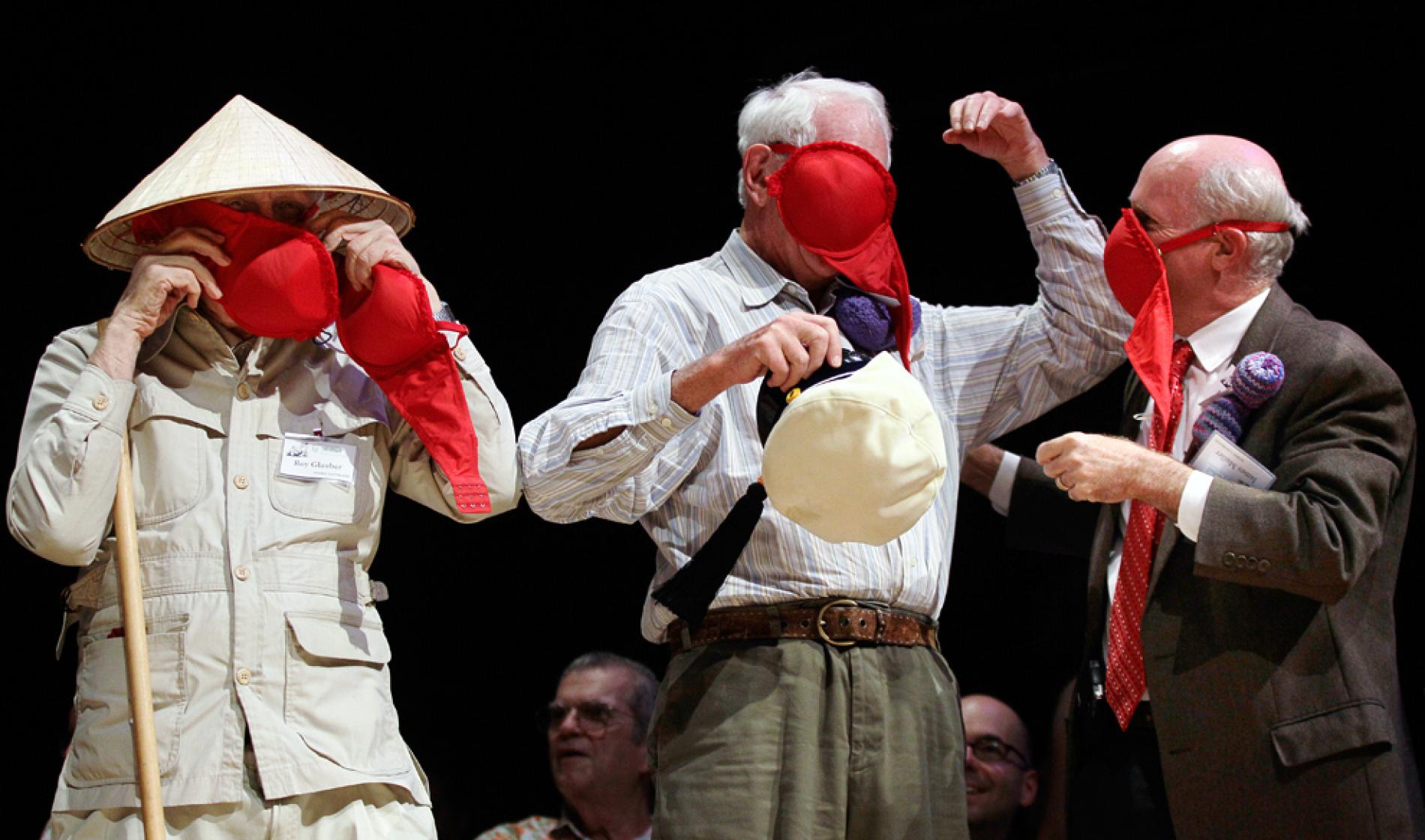The Nobel Prize ceremony that we all know celebrates achievements in medicine, literature, peace and many more. The science that is typically portrayed in a Nobel Prize ceremony is that of a breakthrough ‘eureka’ moment where the scientist or research group cross significant scientific boundaries. However, there is one Nobel Prize ceremony that upholds the more unusual aspects of science and celebrates problems that may be ridiculed elsewhere. These are the lesser known Ig Nobel awards.
This awards ceremony takes place in Harvard University every year and prizes are given in 10 different categories. The prizes are handed out by Nobel laureates and allows the prize winners to be recognised for their scientific creativity. The research projects are celebrated initially, then receive a knee jerk reaction of laughter, closely followed by making the audience think of the potential power of the research at hand.
The most recent ceremony of the Ig Nobel awards was held on the 14th of September and featured winners that investigated a plethora of research questions. A favourite included the Physics award, won by Marc-Antoine Fardin with the question ‘Can a cat be both a solid and a liquid?’, examining the fluid dynamics of a cat. After much research on the matter, and the use of advanced mathematical formulas, it was announced that older cats hold their physical shape for a shorter time than younger cats. This has raised interesting questions over what it means for a fluid to be a fluid, and how the flow of matter works.
The 2017 Economics award was given to Nancy Greer and Matthew Rockloff for their study on how holding a crocodile just before gambling can affect a gambler, yielding results about how adrenaline can affect how much money is lost. More adrenaline gained from holding the crocodile meant that participants of the study were more likely to continue their gambling, believing they were soon to be successful.
The winner of the Fluid Dynamics award examined how coffee is spilt when we walk, prompting a real-world application into how oil tankers spill their oil into oceans. Jiwon Han won the Ig Nobel Prize after publishing a paper entitled ‘A study on the coffee spilling phenomena in the low impulse regime’. If you are looking for a way to keep your coffee intact whilst walking, Han suggests walking backwards or holding the coffee cup from the top in a ‘claw’. Scientifically, this disrupts the resonance of both the walking and the coffee inside the cup, allowing you to reach your destination without coffee burns. With oil tankers, the science is much the same. With both the ocean and the oil moving, resonance occurs easily, which may lead to a spill. However, if the oil is separated into smaller areas within the tanker, resonance is less likely to occur, and oceans remain free from oil.
These are all creative applications of science, but none of them come close to the 2009 winners of the Public Health award; Elena N. Bodnar, Raphael C. Lee, and Sandra Marijan. Together, they demonstrated an easy way for a bra to be turned into a face mask quickly and easily to avoid inhalation of harmful substances. This life-saving garment is now patented, and can also come with the added feature of a radiation detector inside.
Although these scientists may not come to quite the same fame that the Nobel Prize winners do, they are still worthy of celebration, as they prove that ideas that come out of even the weirdest thoughts can have real-world applications. The Ig Nobel ceremony celebrates all that is wacky and weird in science and brings a humoristic element to innovation, something that is needed to bring attention to work that may otherwise have been overlooked. Without the Ig Nobel awards, how would we know that a cup of coffee can eventually stop oil spills or that a bra can save a life?
Kira Knowles
Image: National Geographic

